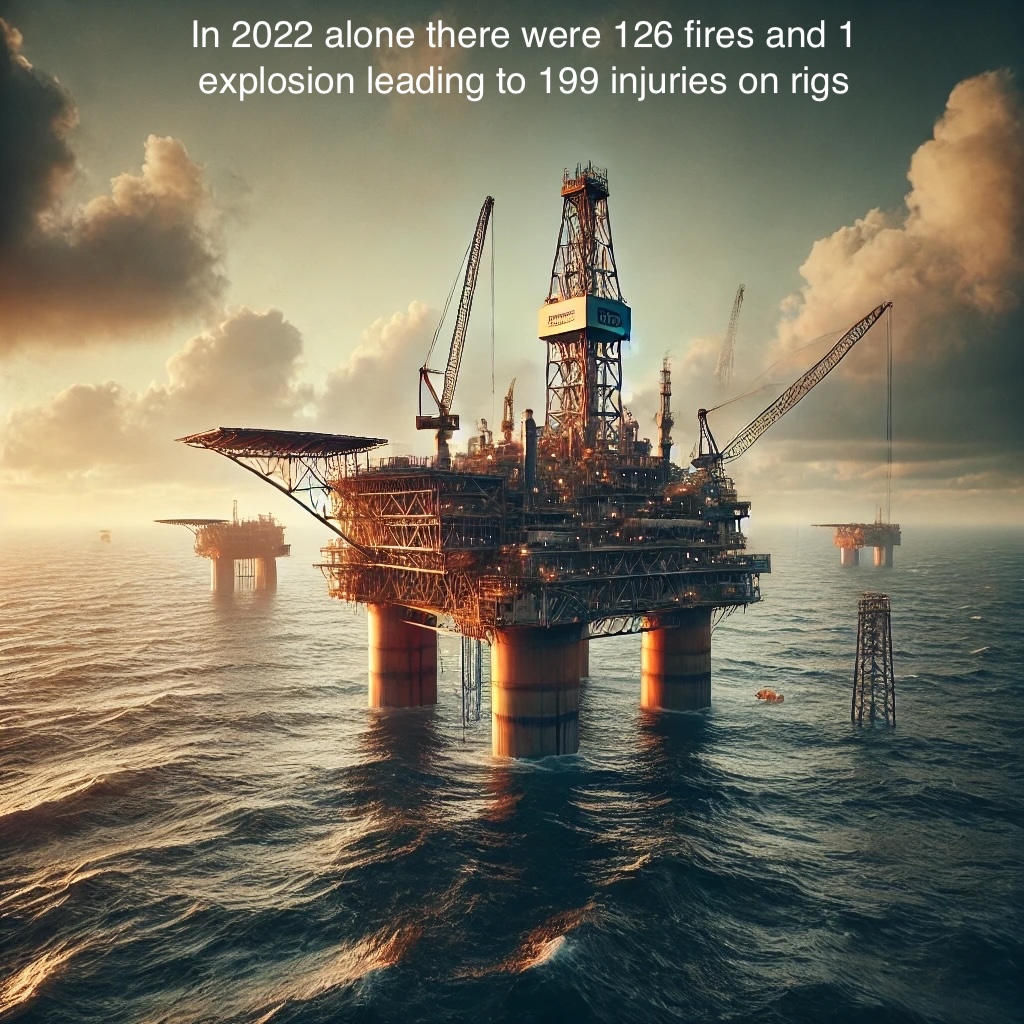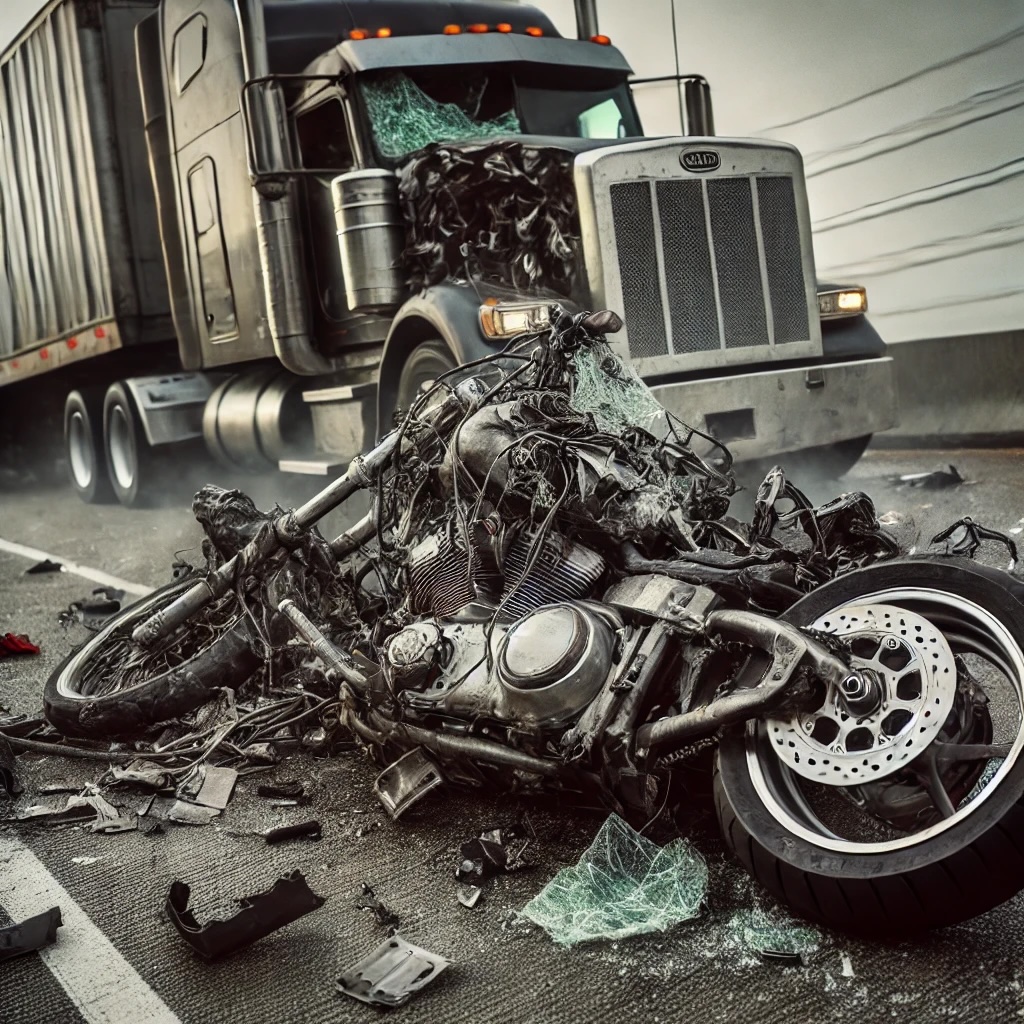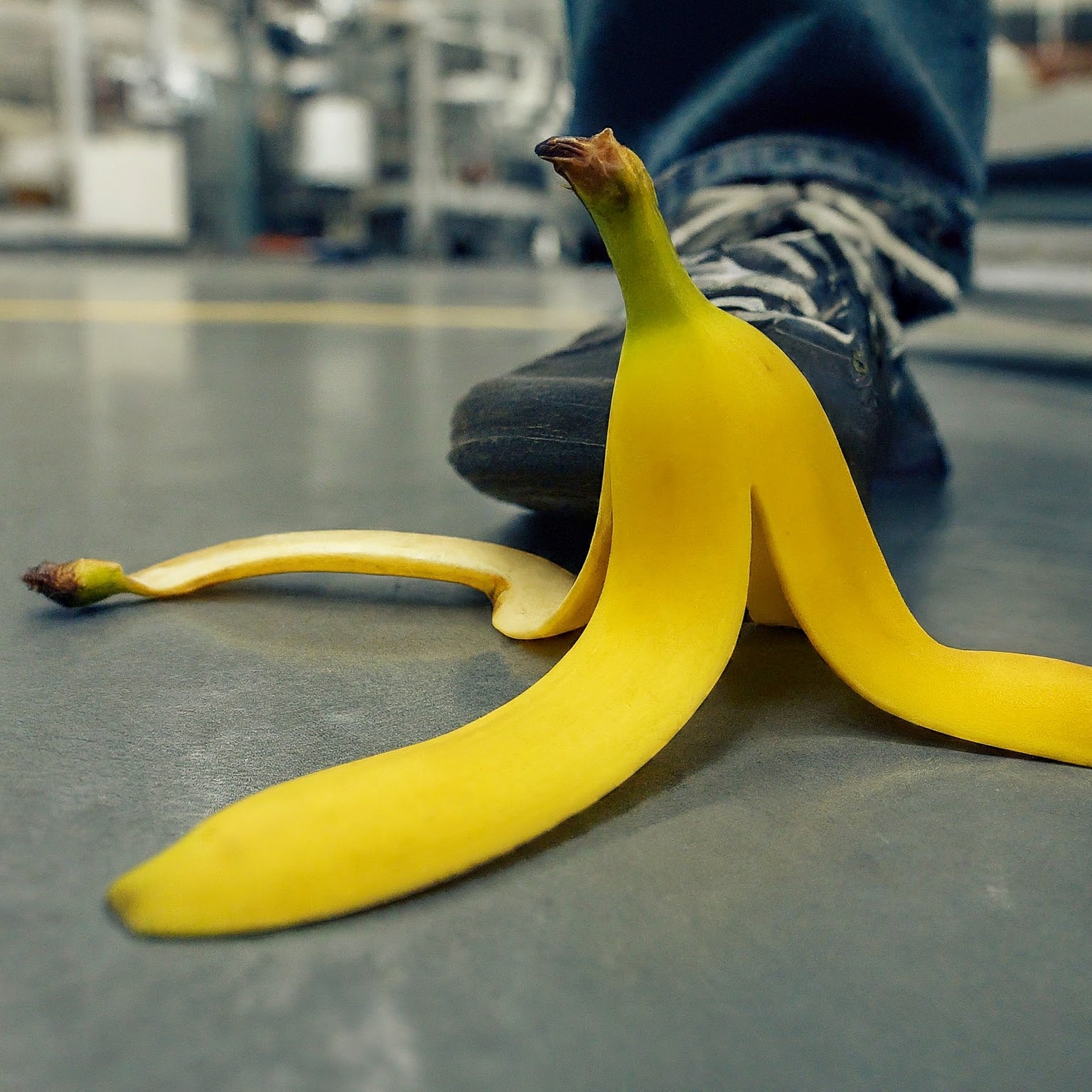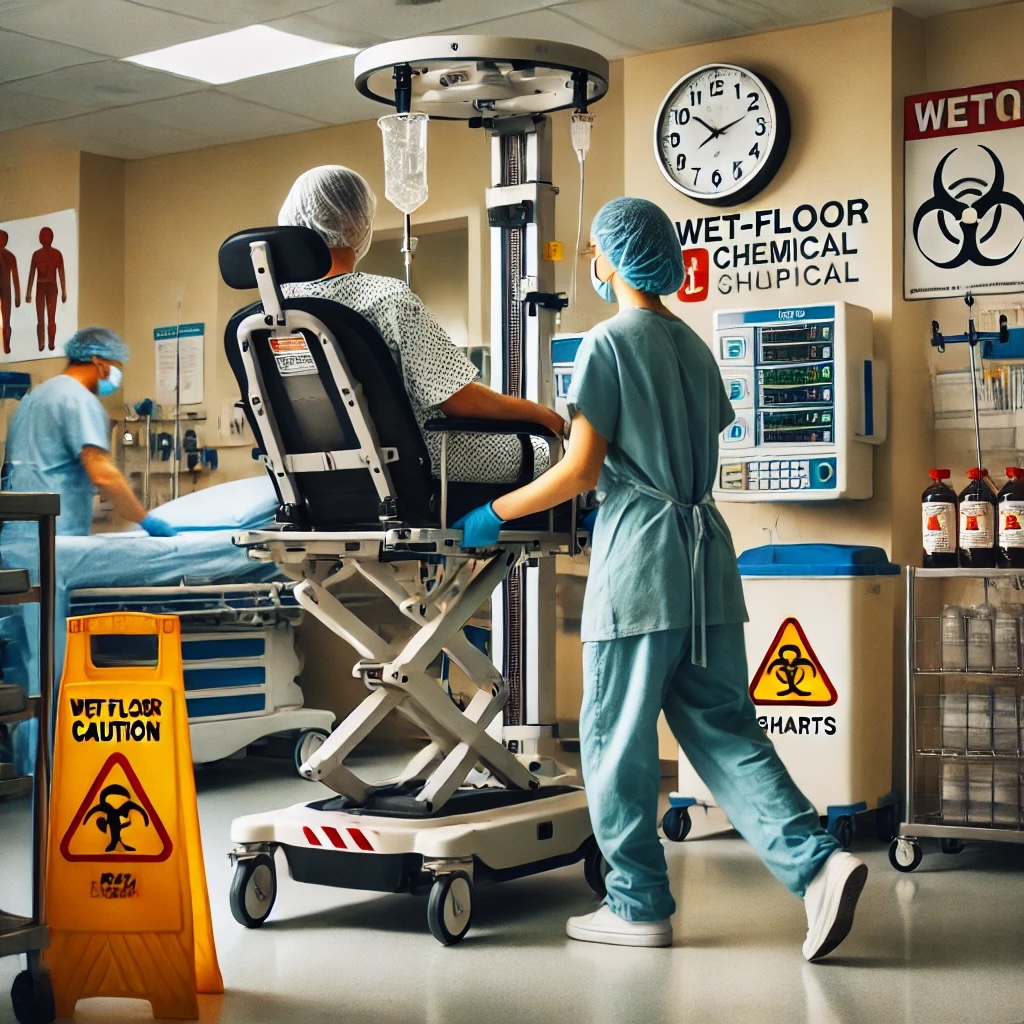Best Books About Industrial Accidents
Below are some of the best books about industrial accidents, ranging from historical accounts to investigations and analyses. These books explore the causes, consequences, and human experiences associated with these tragic events.
- “The Buffalo Creek Disaster: How the Survivors of One of the Worst Disasters in Coal-Mining History Brought Suit Against the Coal Company—and Won” by Gerald M. Stern
- Overview: This book tells the story of a catastrophic coal mining accident in 1972 in Buffalo Creek, West Virginia, where a dam burst, flooding a valley and killing 125 people.
- Why It’s Noteworthy: Written by the attorney who represented the survivors, it provides a legal and personal account of the aftermath of the disaster, showing how a community fought back against a corporation.
- “Midnight in Chernobyl: The Untold Story of the World’s Greatest Nuclear Disaster” by Adam Higginbotham
- Overview: This bestselling book offers an in-depth exploration of the 1986 Chernobyl nuclear disaster, drawing on extensive research and first-hand interviews.
- Why It’s Noteworthy: It’s a gripping, narrative-driven account of the disaster, blending science, history, and human drama. Higginbotham delves into the systemic failures that led to the meltdown and its long-lasting effects.
- “Triangle: The Fire That Changed America” by Dave Von Drehle
- Overview: This book details the 1911 Triangle Shirtwaist Factory fire in New York City, which killed 146 garment workers, most of whom were young immigrant women.
- Why It’s Noteworthy: It highlights the poor working conditions and the lack of safety regulations that contributed to the tragedy, leading to reforms in labor laws and workplace safety.
- “We Are What We Wear: Unravelling fast fashion and the collapse of Rana Plaza” by Lucy Siegle
- Overview: : This book looks into the fast fashion industry and the human cost behind it, focusing on the 2013 Rana Plaza tragedy where a building collapsed in Bangladesh, killing over 1,100 garment workers. It examines the unsafe working conditions in the global garment industry.
- Why It’s Noteworthy: The book is a critical look at the human cost of fast fashion and the exploitative practices that led to one of the worst industrial accidents in modern history.
- “Five Past Midnight in Bhopal: The Epic Story of the World’s Deadliest Industrial Disaster” by Dominique Lapierre and Javier Moro
- Overview: This book chronicles the 1984 Bhopal gas leak in India, which killed thousands and affected many more. It remains one of the deadliest industrial disasters in history.
- Why It’s Noteworthy: It’s a compelling narrative that explores the corporate negligence and regulatory failures that led to the disaster, along with its profound human impact.
- “Hawk’s Nest: A Novel” by Hubert Skidmore
- Overview: This book tells the story of the Gauley Bridge disaster, focusing on the human cost of industrial negligence.
- Why It’s Noteworthy: It’s a deeply personal and humanizing account of a disaster that has often been discussed in more technical or political terms.
- “The Great Molasses Flood: Boston, 1919” by Deborah Kops
- Overview: A strange and sticky piece of history. January 15, 1919, started off as a normal day in Boston’s North End. Workers took a break for lunch, children played in the park, trains made trips between North and South Stations. Then all of a sudden a large tank of molasses exploded, sending shards of metal hundreds of feet away, collapsing buildings, and coating the harborfront community with a thick layer of sticky-sweet sludge.
- Why It’s Noteworthy: This is a children’s book that tells the story of the molasses flood, making it accessible for younger audiences.
These books offer various perspectives on industrial accidents, from historical accounts to technical analyses and personal stories. They highlight the human cost of these events and offer critical insights into how such tragedies can be prevented.
Oil and Gas Accidents in the U.S.: A High-Stakes Game of Safety and Survival
Oil and Gas Accidents in the U.S.: A High-Stakes Game of Safety and Survival
The oil and gas industry in the United States is a behemoth. It fuels our cars, heats our homes, and powers industries. But behind the scenes of this crucial sector lies a risky reality: accidents happen. And when they do, they’re often catastrophic. Whether it’s fiery explosions or mishaps miles offshore, accidents in oil and gas production are both terrifying and frequent. Let’s take a look at the types of accidents, where they happen, and some shocking facts about the numbers.
The Number of Accidents: Some Fiery Facts

Oil and gas production in the U.S. is fraught with risks. In 2022 alone, there were 126 fires, 199 injuries, and 1 explosion on offshore rigs. These accidents can range from minor fires to large-scale disasters like the Deepwater Horizon explosion in 2010, which killed 11 workers and caused one of the worst environmental disasters in history.
In total, from 2003 to 2010, the offshore oil industry saw 128 fatalities, with 51% of them related to transportation issues (especially helicopter crashes). Helicopters, which transport workers to and from rigs, frequently encounter mechanical failures or adverse weather conditions, leading to crashes.
Types of Accidents: The Usual (and Unusual) Suspects
So what kinds of accidents happen on oil rigs? Here’s a breakdown of some common (and not-so-common) incidents:
-
Fires and Explosions: These are among the most dangerous accidents. In 2022, 126 fires were reported on U.S. offshore rigs, caused by anything from gas leaks to equipment malfunctions.
-
Equipment Failure: Oil rigs are mechanical wonders, but they are not infallible. Equipment malfunctions, especially with drilling machinery, are common causes of injuries and accidents. When you’re working with high-pressure drilling equipment, even a small mistake can turn into a big problem.
-
Transportation Accidents: The oil industry relies heavily on helicopters to transport workers to and from rigs, especially in remote offshore locations. Helicopter crashes account for a significant percentage of offshore fatalities, primarily in the Gulf of Mexico.
-
Human Error: Even with advanced training, humans make mistakes. Miscommunication, poor decision-making, or lack of training can lead to accidents. A simple oversight can quickly spiral into a major disaster in such high-risk environments.
-
Weather-Related Incidents: Rigs are often located in areas prone to severe weather. Hurricanes, storms, and high winds are a frequent threat, especially in the Gulf of Mexico. These conditions can cause structural failures, equipment damage, and accidents.
Where Do These Accidents Happen?
The Gulf of Mexico is the epicenter of U.S. oil production — and it’s also where the majority of accidents occur. In this area, accidents range from fires and equipment failures to helicopter crashes. For instance, most offshore helicopter accidents in the oil industry occur in this region. The Gulf is also notorious for severe weather conditions, which contribute to higher accident rates.
A Game of Risk and Reward
While the oil and gas industry is essential to modern life, it’s also a dangerous field to work in. From complex machinery failures to deadly fires, the risks are ever-present. Safety regulations and better oversight have helped reduce some of these risks, but accidents are still common, and the stakes are always high.
As the industry continues to grow, there’s hope that technology and stricter safety protocols will reduce the number of accidents. But until then, oil and gas production remains one of the most hazardous industries, where each day on the job can bring new challenges — and new dangers.
The Takeaway
Next time you fill up your tank, spare a thought for the workers who make it possible — and the risks they face every day. From fires to transportation mishaps, the oil and gas industry is a high-stakes world where even small mistakes can lead to major disasters. Safety may be improving, but the journey is far from over.
Stay safe out there, oil workers — we’re counting on you!
Brian's Journey After a Motorcycle Accident with an 18-Wheeler
Introduction
Life can change in the blink of an eye. For Brian, a regular guy from the suburbs of America, that change came on an ordinary Friday afternoon. What began as a routine ride on his motorcycle ended in a devastating accident that would alter the course of his life. But with determination, resilience, and the right legal support, Brian was able to navigate the aftermath and make things right.
The Accident: A Moment of Carelessness
Brian had always loved the freedom that came with riding his motorcycle. On that fateful day, he decided to take his bike out for a spin after work, relishing the crisp air and the open road. He was heading home on a familiar highway when the accident happened.
As Brian cruised along the highway, an 18-wheeler in the lane next to him suddenly began to drift into his lane. The truck driver, distracted and unaware, didn’t see Brian or his motorcycle. With nowhere to go and no time to react, Brian was sideswiped by the massive truck. The impact sent him flying off his bike and skidding across the asphalt. His motorcycle was crushed under the truck’s tires, a twisted heap of metal by the time it came to a stop.

Brian was lucky to be alive, but he didn’t escape unscathed. He suffered multiple fractures, a severe concussion, and extensive road rash. He was rushed to the hospital, where he spent weeks undergoing surgeries and physical therapy. The physical pain was immense, but the emotional and financial tolls were equally overwhelming.
The Aftermath: Picking Up the Pieces
As Brian lay in his hospital bed, grappling with the reality of his injuries, he couldn’t help but wonder how he would rebuild his life. His medical bills were mounting, and he was unable to work. The insurance company for the truck driver was already trying to downplay the severity of the accident, offering a settlement that wouldn’t even begin to cover his expenses.
It was clear that Brian needed help. He decided to consult with a personal injury attorney, hoping that legal expertise could help him get the compensation he deserved. That’s when he met Sarah, a seasoned attorney with years of experience handling motorcycle accident cases.
Working with an Attorney: Making Things Right
Sarah took on Brian’s case with the determination to hold the truck driver and their employer accountable. She knew that Brian’s injuries and the circumstances of the accident warranted a much higher settlement than what the insurance company was offering. Her first step was to conduct a thorough investigation of the accident.
Sarah reviewed the police report, gathered witness statements, and even obtained traffic camera footage that captured the moment of the collision. The evidence was clear: the truck driver had been negligent. He had been distracted, likely by his phone, and had drifted into Brian’s lane without signaling or checking his mirrors.
Armed with this evidence, Sarah began negotiating with the insurance company. She demanded compensation not only for Brian’s medical bills but also for his lost wages, pain and suffering, and the long-term impact of his injuries. The insurance company initially resisted, as they often do, but Sarah was relentless. She wasn’t afraid to take the case to court if necessary.
Throughout the process, Sarah kept Brian informed and reassured. She knew how stressful the situation was for him, and she made sure he understood each step of the legal process. Her goal was to take the burden off his shoulders so he could focus on his recovery.
The Settlement: A Step Towards Recovery
After months of negotiations, Sarah secured a substantial settlement for Brian. The amount was enough to cover his medical bills, both past and future, as well as his lost income and the pain he had endured. It also included compensation for the permanent physical limitations he would have to live with due to the accident.
The settlement was a huge relief for Brian. It allowed him to pay off his medical debts and ensure that he could continue receiving the care he needed. It also gave him the financial stability to take the time he needed to heal, both physically and emotionally.
While no amount of money could fully undo the trauma of the accident, the settlement represented a measure of justice. It held the truck driver and the trucking company accountable for their negligence and provided Brian with the resources he needed to rebuild his life.
Moving Forward: Life After the Accident
Brian’s journey to recovery was long and difficult, but he was determined to make the most of his second chance at life. With the help of physical therapy and a strong support system, he gradually regained his strength. He also found solace in connecting with other motorcycle accident survivors, sharing his story and offering support to those who were just beginning their own recovery journeys.
The accident had taken a lot from Brian, but it had also given him a new perspective on life. He became an advocate for motorcycle safety, speaking out about the dangers of distracted driving and the importance of sharing the road. He knew firsthand how a moment of carelessness could have devastating consequences, and he was determined to raise awareness and prevent others from going through what he had endured.
Brian’s story is a testament to the power of resilience and the importance of having the right support when life takes an unexpected turn. Thanks to the help of his attorney, he was able to navigate the legal challenges and secure the compensation he needed to move forward. And while the road to recovery was long, Brian emerged stronger, with a renewed appreciation for life and a commitment to making a difference.
Conclusion
Brian’s motorcycle accident with the careless 18-wheeler was a life-changing event, but it didn’t define him. With the help of a skilled attorney and his own determination, he was able to overcome the challenges and rebuild his life. His story serves as a reminder of the importance of seeking legal help after an accident and the difference it can make in ensuring that justice is served.
If you or someone you know has been involved in a similar accident, don’t hesitate to seek the help of a personal injury attorney. The right legal representation can make all the difference in securing the compensation you deserve and helping you move forward with your life.
Industrial Accidents: A (Not So) Funny Business
Ever wondered what it’s like to have a forklift dance on your toes? Or maybe you’ve always dreamed of being launched into the stratosphere by a rogue piece of machinery? Well, you’re in luck! Today, we’re going to delve into the exciting world of industrial accidents.
1. The Slip, Trip, and Fall Classic: This is the granddaddy of all workplace mishaps. It’s a timeless tale of misplaced bananas, unexpected puddles, and the eternal battle between gravity and our desire to stay upright. Remember, kids: always watch your step, especially when you’re wearing those slick new safety boots.

2. The Machinery Mayhem: Ever been chased by a rogue conveyor belt? Or perhaps you’ve had a friendly chat with a disgruntled drill press? Machinery accidents are like a real-life game of whack-a-mole, but with much higher stakes and a lot less fun.
3. The Hazardous Substance Hijinks: Who hasn’t fantasized about accidentally turning themselves into a human glowstick after a spill? Or maybe you’ve always wanted to experience the thrill of being engulfed in a cloud of toxic fumes? Well, the world of hazardous substances is here to make your dreams come true.
4. The Fire and Explosion Extravaganza: Nothing quite beats the excitement of a good old-fashioned workplace fire. Whether it’s a spontaneous combustion or a controlled explosion, these accidents are sure to add a little spice to your day. Just remember to keep a fire extinguisher handy, and maybe invest in a flame-resistant onesie.
5. The Electrical Shock Spectacular: Ever wanted to feel like a human lightning rod? Well, electrical accidents are the perfect way to experience that tingly sensation without the pesky side effects like heart failure or electrocution.
6. The Falling Objects Follies: Who hasn’t daydreamed about being flattened by a heavy object? Whether it’s a crate of bricks or a giant industrial fan, falling objects are always a fun and exciting way to spice up your workday.
So, there you have it, folks! A brief overview of the many and varied types of industrial accidents. Remember, safety first! And if you ever find yourself in a dangerous situation, just remember to keep calm, stay cool, and try not to laugh too hard.
Behind the Scenes of Healthcare Hazards: Case Studies on Accidents and Prevention
Exploring case studies of healthcare-related industrial accidents offers a closer look at real-world incidents and how they were handled, providing valuable lessons for prevention. Below are some notable case studies from different types of healthcare environments, focusing on common accidents such as needlestick injuries, slips and falls, and patient-handling incidents. Each case highlights what went wrong, the consequences, and the preventive measures taken afterward.

1. Case Study: Needlestick Injury in a Hospital Setting
Incident:
A nurse in a busy hospital emergency department accidentally punctured her hand while attempting to recap a used needle after administering a medication. The needle had been used on a patient with a known history of hepatitis C. The nurse reported the injury immediately, but anxiety surrounding the risk of infection impacted her work and mental health during the waiting period for testing.
Consequences:
- The nurse underwent several rounds of blood testing over a six-month period to monitor for potential infection.
- The nurse experienced emotional distress and anxiety during the testing period, despite eventually testing negative for hepatitis C.
- The hospital faced an internal review from safety regulators, and the incident raised concerns about the facility’s compliance with OSHA regulations.
Lessons Learned & Prevention:
- Following the incident, the hospital increased its training on the use of safety-engineered devices, including retractable needles and self-sheathing syringes.
- A strict “no recapping” policy was enforced to prevent similar incidents. All staff were reminded to immediately dispose of needles in sharps containers.
- Annual refresher courses on sharps safety were made mandatory for all clinical staff.
2. Case Study: Slip-and-Fall Accident in a Nursing Home
Incident:
A certified nursing assistant (CNA) slipped on a wet floor while rushing to assist a resident in a long-term care facility. The floor had just been mopped, but no “wet floor” signs were in place. The CNA sustained a lower back injury, which required several weeks off work for recovery.
Consequences:
- The CNA required physical therapy and light-duty work upon returning, which increased staffing challenges at the facility.
- An OSHA investigation found that the nursing home had inadequate policies in place for wet-floor signage and housekeeping practices.
- The nursing home incurred fines for safety violations and had to implement immediate corrective actions.
Lessons Learned & Prevention:
- The facility improved its housekeeping protocols, ensuring that “wet floor” signs are always placed in areas being cleaned.
- Additional training was provided to housekeeping and clinical staff on slip prevention, including using appropriate footwear and adhering to cleaning schedules during less busy hours.
- The facility also introduced slip-resistant mats in areas prone to spills and accidents, such as kitchens and medication rooms.
3. Case Study: Musculoskeletal Injury During Patient Transfer
Incident:
In a rehabilitation hospital, a physical therapist sustained a shoulder injury while attempting to transfer a bariatric patient from a wheelchair to a bed. The transfer was done manually, as a mechanical lift was unavailable at the time. The therapist felt a sharp pain during the transfer and later required surgery for a torn rotator cuff.
Consequences:
- The physical therapist was unable to work for several months due to the injury, leading to staffing shortages in the department.
- The rehabilitation facility faced a lawsuit from the injured employee, citing a lack of appropriate equipment and training.
- An internal investigation found that the facility had not properly maintained its mechanical lifting devices, and staff were frequently forced to perform manual transfers.
Lessons Learned & Prevention:
- Following the injury, the facility invested in additional patient-lifting equipment, including mobile mechanical lifts and transfer belts.
- A new patient-handling policy was implemented, mandating the use of mechanical aids for any patient weighing over a specific threshold.
- The facility also began conducting regular inspections of patient-handling equipment to ensure it was functioning properly.
4. Case Study: Chemical Exposure in a Laboratory Setting
Incident:
In a hospital laboratory, a technician accidentally spilled a vial of a hazardous chemical while preparing specimens for testing. The spill occurred because the technician was not using proper personal protective equipment (PPE) and was working in a rush. The technician was exposed to fumes, causing respiratory irritation and requiring medical treatment.
Consequences:
- The technician experienced short-term respiratory symptoms and was treated for chemical exposure.
- The laboratory had to be temporarily closed for decontamination, delaying important diagnostic work.
- An investigation revealed that safety protocols for handling hazardous chemicals were inconsistently followed.
Lessons Learned & Prevention:
- The hospital introduced stricter enforcement of PPE policies, requiring all lab personnel to wear protective gear when handling hazardous substances.
- Regular safety drills and training sessions on chemical handling were instituted to ensure compliance.
- The lab was reconfigured to improve workflow and reduce the likelihood of spills, with better labeling and storage of hazardous chemicals.
5. Case Study: Violence in the Emergency Department
Incident:
A patient under the influence of drugs became aggressive and assaulted a nurse in an emergency room. Despite previous indicators of violent behavior, the nurse was alone when the incident occurred. The nurse suffered a concussion and multiple bruises from the attack.
Consequences:
- The nurse required several weeks of medical leave and suffered from post-traumatic stress following the incident.
- The emergency department faced increased scrutiny over its lack of safety protocols to protect staff from violent patients.
- An internal review found that the hospital had not adequately implemented de-escalation strategies or provided sufficient security in high-risk areas.
Lessons Learned & Prevention:
- The hospital strengthened its violence prevention program, providing de-escalation training for all emergency room staff.
- Security presence was increased, particularly in areas where there is a higher likelihood of patient aggression.
- Panic buttons were installed in all treatment areas, and protocols were developed for dealing with patients showing signs of aggression, including mandatory presence of security personnel.
Conclusion
These case studies highlight the varied risks healthcare workers face and demonstrate the importance of implementing robust safety protocols. The recurring theme in all these incidents is the need for proper training, appropriate equipment, and clear safety policies. Prevention strategies, such as improving ergonomics, maintaining equipment, enforcing PPE use, and addressing workplace violence, can go a long way in reducing industrial accidents in healthcare settings.